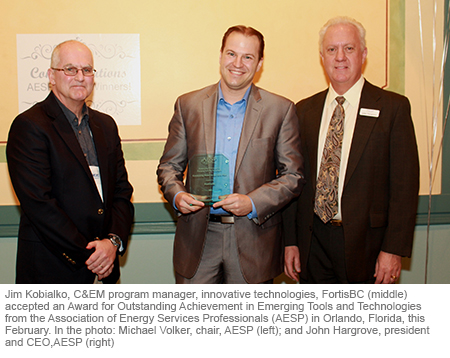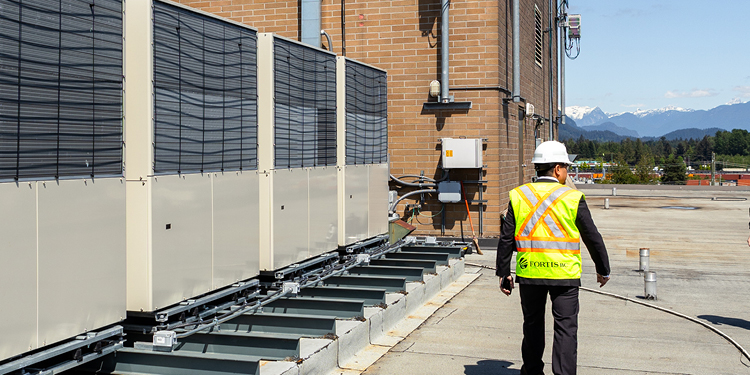The next big thing on rooftops
April 10, 2017
That’s why Jim Kobialko, program manager of innovative technologies on FortisBC’s conservation and energy management team, was intrigued when he heard about a type of rooftop unit called a condensing make-up air unit that could reduce energy consumption by 10 per cent or more.
Buildings have rooftop units to regulate and circulate air as part of a heating, ventilating, and air conditioning (HVAC) system. But in many cases, these older units may waste energy because they are not sized properly or do not perform optimally for the building.
Jim’s job at FortisBC is to measure savings and customer acceptance of new technology before rolling them out in full-scale rebate programs. Once the rebate program is available, customers can be certain recommended upgrades have the results they expect, before they invest in those upgrades.
And upgrading a rooftop unit is no small task. Rooftop units cost between $18,000 and 30,000 installed and last about 15 to 20 years. They can often be fixed instead of replaced.
The condensing make-up air unit costs about 20 per cent or $3,500 more than a standard rooftop unit, so it’s important that it delivers on the promised energy savings.
Jim worked with a team to field test eight units in 2013 — seven in condo buildings and one in a school, all located in the Lower Mainland. He set out not just to measure the natural gas savings, but also to consider installation factors and any changes to comfort levels within the buildings. They tested the energy savings after two years and the results were impressive.

“This was home-run technology from our perspective,” said Jim. “Natural gas use was reduced by 17 per cent, which even exceeded the expectations of the pilot. It also had a 100 per cent satisfaction rate from the building owners.”
The condensing units reduce energy use by capturing a portion of the heat from the steam it exhausts through the flue. This means less natural gas is needed to warm the fresh, outdoor air it circulates through the building.
Jim is working to drive adoption in BC and beyond and is presenting his findings to other utilities and industry associations. In February, the project was also recognized with an Award for Outstanding Achievement in Emerging Tools and Technologies from the Association of Energy Services Professionals. These awards honor some of the best energy efficiency programs from around North America for creative thinking, new approaches and problem-solving. More manufacturing firms are looking to expand their product offerings with this technology.
“The work we’ve done here in BC has the potential to drive change throughout North America, so sharing our findings is an important part of the work we do,” said Jim. “And it’s been very gratifying to be a part of it.”
For our customers, work is underway to incorporate this energy-saving technology into our rebate and incentive programs to make it easier for commercial builders and commercial building owners to choose this condensing make-up air unit costs for their own projects.
And Jim? He’s busy testing out the next big thing.



